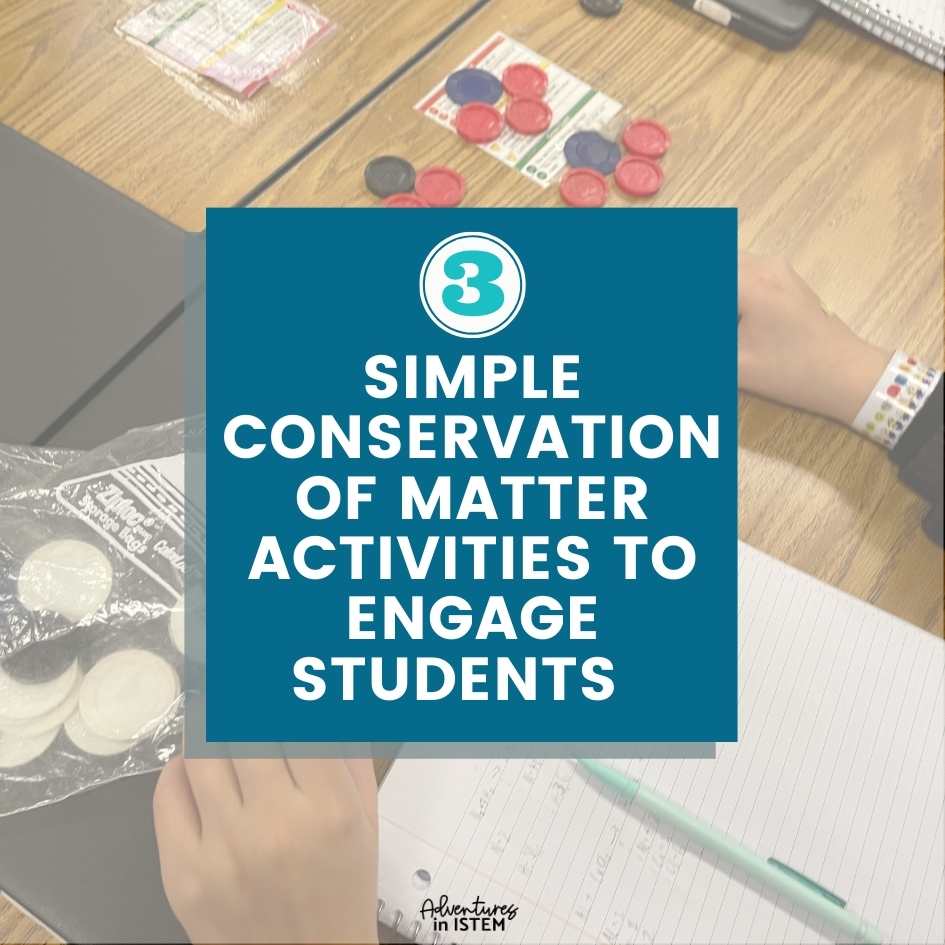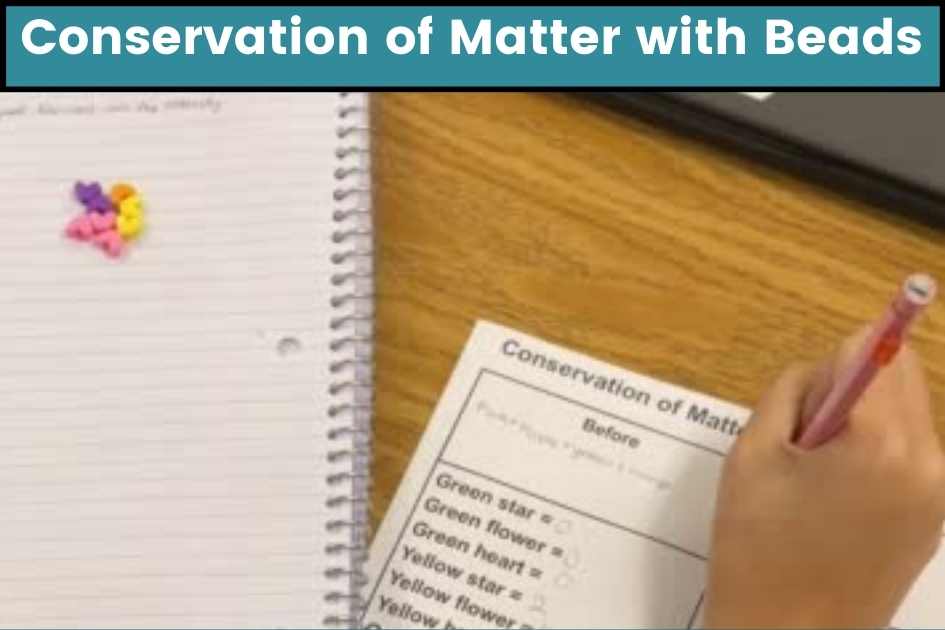
Are you struggling with teaching your students about the conservation of matter and conservation of mass? With these simple and engaging conservation of matter activities, your students will be able to visually see how atoms are not created or destroyed in a chemical reaction; they just rearrange.
#1 Conservation of Matter Activity Using Colored Beads From Your Local Dollar Store
I love heading to my local dollar store and finding inexpensive items for my classroom. While I was in the craft section, I came across a bag of beads that had six different colors (pink, purple, green, yellow, blue, and orange) and three different shapes (heart, flower, and star). It was perfect. I divided the bead into six colors, and then I placed around 20 beads in a bag, making sure that each bag had four different colors and three different shapes. I made enough bags to allow students to work in pairs.
First, they categorized the beads into four colors. They then counted up how many of the beads they had of each possible color/shape combination. For example, how many purple hearts or pink stars they had. Next, I had them categorize them into shapes. Again, they counted up how many of the beads they had of each possible color/shape combination.
They then had to find the similarities and differences between the before and after. With this activity, they were able to see that even though the beads were grouped differently, the number of each color/shape combination stayed the same. I was then able to relate this to the reactant compounds and the product compounds, and the beads to the individual atoms.

#2 Poker Chips For Balancing Equations?
Poker chips and checker pieces are perfect to help students understand how to balance chemical equations. I used four different poker chips (blue, red, and white) and the black checker pieces to make it work. I had my students work in groups of four for this activity. I made sure that each color had about 10 chips, with one color having at least 16 chips.
I then wrote out a simple equation and designated one color for each element. We laid out our poker chips based on the unbalanced equation. From there, they had to count how many of each poker chip they had and also how many atoms of each element they had. Together we problemed solved how to make sure that we had the same number of each type of poker chips on the left as we did on the right.
I used this activity to help students understand the difference between a subscript and a coefficient. It also made it more visual for them to see why we can only add more of a compound and not just add an atom to the compound.
By the time they were on their third equation they were able to correctly balance the simple equations and understood the difference between subscripts and coefficients.

# 3 Save Those Glowsticks
Halloween and the Fourth of July are the perfect time to stock up on glow sticks for simple conservation of mass activities. Glow sticks are activated through a chemical reaction called chemiluminescence. Inside the glow stick is a liquid that contains a mixture of a fluorescent dye and hydrogen peroxide. When the stick is snapped, the inner glass vial breaks, allowing the two chemicals to mix together. This reaction causes the fluorescent dye to emit light, producing the glowing effect. The whole reaction is contained inside the glow stick, making it a closed system.
This is why glow sticks are perfect for demonstrating the conservation of mass. First, have the students place the nonactivated glow stick onto a balance and record the mass. Then, have the students activate the glow stick. You can talk about what evidence of a chemical reaction is observed at this point. Finally, have the students place the activated glow stick onto the balance and record the mass again. The mass will stay the same because it is a closed system.
Simple Online Conservation of Matter Activities That Students Will Love
I love doing the 3 hands-on activities to help my students practice and understand the conservation of matter. However, there are two online activities that I couldn’t do without. The hands-on activities and online activities are the perfect combinations for a conservation of matter unit.
#4 pHET Balancing Equations
If you are not familiar with PhET then you need to be. In my opinion, PhET is hands down the best free simulation site for science. Their HTML 5 simulations are easy to use and make concepts easy to grasp. Their balancing equation simulation has students increasing coefficients to see how the equation is balanced. When they get it correct, they get a happy face. After they practice, they can test their knowledge by playing games at three different skill levels.

#5 SimPop Chemical Equations
One that I just came across recently that also does a great job at helping students visually see what happens to the atom count when they change the coefficient is from SimPop. Their chemical equation simulation has students changing coefficients until the atoms on the left match the atoms on the right. Every time the atoms of one of the elements in the equation balance, they get a green check. If the atoms are not balanced, they get a red cross. They continue until every element has a green check.






